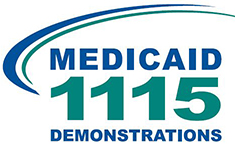In September, the Centers for Medicare & Medicaid Services (CMS) encouraged state Medicaid agencies to advance value-based care by adopting value-based payment (VBP) models. Compared with the traditional fee-for-service payment models that reward volume, value-based models give health care providers financial incentives to reduce costs while improving health care outcomes, such as reducing avoidable hospital readmissions. Specifically, CMS recommended that states build on lessons from preceding Medicaid initiatives, including the nine section 1115 Delivery System Reform Incentive Payment (DSRIP) demonstrations implemented over the past decade.
As states look to learn from those demonstrations, we hope they will consult our new report, which summarizes findings from a five-year, mixed-methods evaluation of DSRIP demonstrations in four states.
These state demonstrations aimed to transform the delivery system and build safety net providers’ capacity to engage in VBP arrangements. States tied incentive payments to safety net provider investments in areas such as (1) health information technology systems, (2) expanded primary and preventive care services, (3) integration of physical and behavioral health services, (4) care coordination, and (5) workforce enhancements. By tying incentives to provider investments, the demonstrations set the stage for these providers to track and improve performance on cost and clinical quality—in other words, to prioritize value over volume in health care.
Our impact evaluation, conducted on behalf of CMS, used administrative data to examine demonstrations in California, New Jersey, New York, and Texas. The evaluation focused on several key outcomes: shifting care away from acute care settings; increasing use of primary, preventive, and behavioral health services; and improving clinical care processes. Findings were mixed across and within states. For example, California saw increases in emergency department visits and no significant changes in child or adult outpatient care. But New York, which set ambitious demonstration goals related to reducing avoidable hospital use, showed that progress is possible. The state saw decreases in emergency department visits and increases in adult outpatient care, reducing reliance on care in costly acute inpatient care settings.
Qualitative findings suggest the important role DSRIP demonstrations played in catalyzing delivery system reforms and strengthening providers’ capacity to participate in value-base payment models. Provider representatives across states invested DSRIP funds in building the foundational infrastructure for future VBP models. For instance, public hospital systems in California used DSRIP funds to expand access to primary care and telehealth to help patients with diabetes, asthma, and other chronic illnesses manage their conditions.
But state and provider DSRIP leaders also indicated how hard it can be, and how long it can take, to establish and maintain the infrastructure necessary to support VBP models. Findings point to several key lessons for future efforts:
- Sharing and using performance data effectively. Despite progress in collecting, sharing, and using data for patient care and performance measurement, DSRIP program participants cited several obstacles, including lack of interoperability and timely health information exchange. Efforts should focus on supporting interoperability, addressing regulatory and policy constraints inhibiting health information exchange, and building data capacity to ensure necessary clinical data are available.
- Recognizing the limits of safety net providers’ ability to accept financial risk. More advanced VBP models typically require providers to assume some level of downside financial risk. Safety net providers operate on tight financial margins, driven in part by low Medicaid base payments that do not always cover the full cost of care. States often address this shortfall by providing supplemental payments to safety net providers. Some DSRIP states tried to accelerate adoption of VBP by tying supplemental payments to performance on quality metrics, but any losses incurred for missing quality and cost targets could jeopardize participants’ financial viability. Unless base payments cover the cost of providing care, supplemental payments will remain critical to safety net providers.
- Building to sustain progress. Because DSRIP was intended to be a temporary bridge to VBP, states planned to replace DSRIP with VBP models after the demonstrations ended. However, most Medicaid VBP models do not cover providers’ ongoing costs of maintaining and improving critical infrastructure, such as upgrading electronic health records or collaborating with community agencies to address social determinants of health. As states expand existing VBP models and design new ones, it will be important to consider how to support these critical elements.
Payment models that focus on value, not volume, hold promise for improving health outcomes for millions of Medicaid beneficiaries at lower cost. The lessons of DSRIP demonstrations can help lay the bricks today, and year after year, to build a Medicaid VBP system that will stand the test of time.






